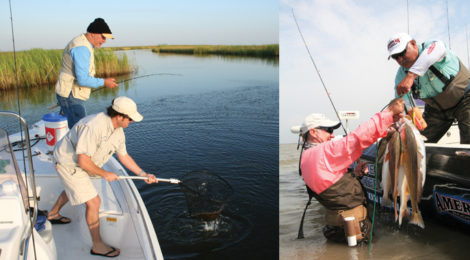
Ins & Outs of Drains
How and when to fish these travel corridors for more specks, reds and flounder.
Story and Photography by Robert Sloan
Every bay on the Texas coast has drains and most are like fish magnets. Here’s the deal. A drain is a mini canal that empties into a bay or backwater estuary lake. On an incoming tide the water moves in with a rich mixture of baitfish and crabs. Predator fish like reds, trout and flounder won’t be far behind. And when the tide falls everything moves back out into the bay. It happens every day on every bay and if you’re in the right spot at the right time it’s easy to tap into some rod bending action.
The absolute best place to fish a drain is at the mouth where it feeds into an open bay system. A good example is on the Louisiana side of Sabine Lake at a place the locals call the Gator Hole. This is a small estuary lake with two bayous feeding into it at the back end. The mouth is about 30 yards wide. Past the opening it expands into a marsh lake that’s about 400 yards long. At the very back end there is a bayou and several small feeder “creeks”. On an incoming tide the whole thing is flooded. With that water will be mullet, shrimp, crabs, mud minnows and of course reds, trout and flounder. It’s the way the food chain works. When the tide turns everything is funneled back into the bay.
On one particular morning I was with guide Skip James and we were anchored at the mouth of the Gator Hole. We got there at about 8:00 a.m. The tide wasn’t going to turn and move out for another hour or so. We fished for a while and caught a couple of small flounder. Then the tide went completely dead, but within a few minutes turned and started to fall. That’s when everything changed. Within minutes we started catching trout – big trout.
We were fishing MirrOlure She Dogs in pink/silver. That’s a slow sinking mullet-imitation lure that’s about 4 inches long. The mouth of the Gator Hole was full of mullet, and trout were all over them. We caught easy limits, a few reds and then went to work on catching flounder.







